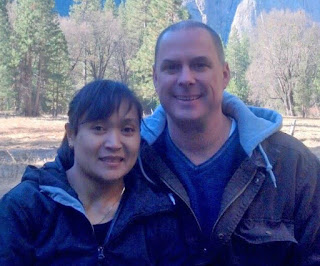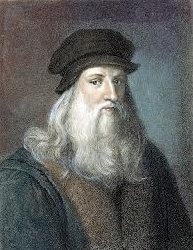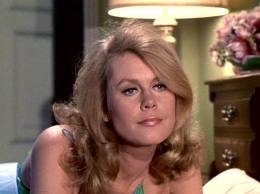Kentucky (US: /kənˈtʌki/ ⓘ kən-TUK-ee, UK: /kɛn-/ ken-), officially the Commonwealth of Kentucky, is a landlocked state in the Southeastern region of the United States. Kentucky borders Illinois, Indiana, and Ohio to the north, West Virginia to the northeast, Virginia to the east, Tennessee to the south, and Missouri to the west. Its northern border is defined by the Ohio River. Its capital is Frankfort and its largest city is Louisville. As of 2020, the population was approximately 4.5 million.
Kentucky was admitted into the Union as the 15th state on June 1, 1792, splitting from Virginia in the process. It is known as the "Bluegrass State", a nickname based on Kentucky bluegrass, a species of green grass introduced by European settlers for the purpose of grazing in pastures, which has supported the thoroughbred horse industry in the center of the state.
Historically, Kentucky had excellent farming conditions, which led to the development of large tobacco plantations similar to those in Virginia and North Carolina in the central and western parts of the state that utilized enslaved labor during the Antebellum South and Civil War periods. Kentucky ranks fifth nationally in goat farming, eight in beef cattle production, and 14th in corn production. While Kentucky has been a long-standing major center for the tobacco industry, the state's economy has diversified in multiple non-agricultural sectors, including auto manufacturing, energy fuel production, and medical facilities. The state ranks 4th among US states in the number of automobiles and trucks assembled. Kentucky is one of several states considered a part of the Upland South.
The state is home to the world's longest cave system in Mammoth Cave National Park, the greatest length of navigable waterways and streams in the contiguous United States, and the two largest artificial lakes east of the Mississippi River. Cultural aspects of Kentucky include horse racing, bourbon, moonshine, coal, My Old Kentucky Home State Park, automobile manufacturing, tobacco, southern cuisine, barbecue, bluegrass music, college basketball, Louisville Slugger baseball bats, Kentucky Fried Chicken, and the Kentucky Colonel.
Etymology
In the late 18th century, prior to 1769, Botetourt and successor counties of the Colony of Virginia, whose geographical extent was south of the Ohio/Allegheny rivers beyond the Appalachian Mountains, became known to European Americans as Kentucky (or Kentucke) country. It was named for the Kentucky River, a tributary of the Ohio River in east central Kentucky.
The precise etymology of the name is uncertain. One theory sees the word based on an Iroquoian name meaning "(on) the meadow" or "(on) the prairie" (cf. Mohawk kenhtà:ke, Seneca gëdá'geh (phonemic /kɛ̃taʔkɛh/), "at the field"). Another theory suggests a derivation from the term Kenta Aki, which could have come from an Algonquian language, in particular from Shawnee. Folk etymology translates this as "Land of Our Fathers". The closest approximation in another Algonquian language, Ojibwe, translates as "Land of Our In-Laws", thus making a fairer English translation "The Land of Those Who Became Our Fathers". In any case, the word aki means "land" in most Algonquian languages.
Statehood
The county was subdivided into Jefferson, Lincoln and Fayette Counties in 1780, but continued to be administered as the District of Kentucky even as new counties were split off.
On several occasions the region's residents petitioned the General Assembly and the Confederation Congress for separation from Virginia and statehood. Ten constitutional conventions were held in Danville between 1784 and 1792. One petition, which had Virginia's assent, came before the Confederation Congress in early July 1788. Unfortunately, its consideration came up a day after word of New Hampshire's all-important ninth ratification of the proposed Constitution, thus establishing it as the new framework of governance for the United States. In light of this development, Congress thought that it would be "unadvisable" to admit Kentucky into the Union, as it could do so "under the Articles of Confederation" only, but not "under the Constitution", and so declined to take action.
On December 18, 1789, Virginia again gave its consent to Kentucky statehood. The United States Congress gave its approval on February 4, 1791. (This occurred two weeks before Congress approved Vermont's petition for statehood.) Kentucky officially became the fifteenth state in the Union on June 1, 1792. Isaac Shelby, a military veteran from Virginia, was elected its first Governor.
Abraham Lincoln Birthplace near Hodgenville
Kentucky produces 95% of the world's supply of bourbon whiskey, and the number of barrels of bourbon being aged in Kentucky (more than 5.7 million) exceeds the state's population. Bourbon has been a growing market – with production of Kentucky bourbon rising 170 percent between 1999 and 2015. In 2019 the state had more than fifty distilleries for bourbon production.
Horse industry
Horse Racing has long been associated with Kentucky. Churchill Downs, the home of the Derby, is a large venue with a capacity exceeding 165,000. The track hosts multiple events throughout the year and is a significant draw to the city of Louisville. Keeneland Race Course, in Lexington, hosts two major meets, the Spring and Fall running. Beyond hosting races Keeneland also hosts a significant horse auction drawing buyers from around the world. In 2019 $360 million was spent on the September Yearling sale. The Kentucky Horse Park in Georgetown hosts multiple events throughout the year, including international equestrian competitions and also offers horseback riding from April to October.
Lexington^
If you want to read a whole lot more, go here: https://en.wikipedia.org/wiki/Kentucky
- SERVES
- 9
- COOK TIME
- 25 Min
If you love the irresistibly delicious combination of rich oniony broth and an ooey-gooey cheesy topping, then you're going to love our potluck-sized recipe for French Onion Bake. It comes together with just three ingredients and is an everyone-favorite!
- 1 loaf French bread, cut into 1/2-inch slices (about 18 slices)
- 2 cups (8 ounces) shredded Swiss cheese
- 1 envelope onion soup mix (from a 2.75-ounce box), prepared according to package directions for soup
- Preheat oven to 425º. Arrange bread slices on baking sheets and bake 5 minutes per side, or until dry and golden.
- Reduce oven temperature to 350º. Coat a 9- x 13-inch baking dish with cooking spray.
- Arrange half the bread slices in a single layer over bottom of baking dish. Sprinkle with 1 cup cheese and top with remaining bread slices. Pour prepared onion soup over bread and sprinkle with remaining cheese.
- Bake 25 to 30 minutes, or until bread has absorbed most of the soup and cheese is golden.


















